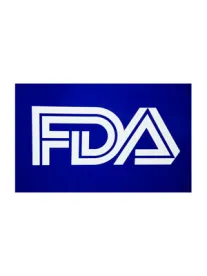In September 2014, the U.S. Food and Drug Administration (FDA) released four (4) Proposed Supplemental Rules that revise the agency’s prior proposed rules that implement the Food Safety and Modernization Act (FSMA). Specifically, the Proposed Supplemental Rules modify the following proposed rules: 1) Current Good Manufacturing Practice (CGMPs) and Hazard Analysis and Risk-Based Preventative Controls for Human Food; 2) Current Good Manufacturing Practice and Hazard Analysis and Risk-Based Preventative Controls for Food for Animals; 3) Standards for the Growing, Harvesting, Packing and Holding of Produce for Human Consumption; and 4) Food Supplier Verification Programs (FSVP) for Importers of Food for Humans and Animals.
FDA asserts that the proposed supplemental rules take into account comments received on the initial proposed rules and make the proposed rules more flexible and less burdensome. For example, in the proposed rules the agency sought comments on the definition of “very small businesses” and in the proposed supplemental rules the agency has selected the most inclusive option (the highest total annual sales option) and is accepting comments on the selected threshold. At the same time, FDA also decided to propose new requirements for product testing, environmental monitoring, supplier requirements and intentional economic adulteration.
Here are the highlights of the four Proposed Supplemental Rules:
-
Current Good Manufacturing Practice (CGMPs) and Hazard Analysis and Risk-Based Preventative Controls for Human Food[1]
Farms that Pack or Hold Raw Agricultural Commodities are not considered a Food Facility
- Farms that pack or hold raw agricultural commodities grown on another farm under different ownership are not required to register as a “food facility” and, as a result, are not subject to the preventative controls rule. On-farm packing and holding produce is generally addressed by the produce safety rule, not the human food preventive rule.
Definition of “Very small business”
- A “very small business” is defined as having
Product Testing, Environmental Monitoring and Supplier Controls
- The original proposed rules noted that product testing, environmental monitoring and supplier controls were a possibility but no specific regulatory language was proposed. The proposed supplemental rule now includes specific proposed language. FDA is seeking comment on whether a facility should have to conduct product testing to verify implementation and effectiveness of preventive controls and conduct environmental monitoring to verify implementation and effectiveness of preventative controls if contamination of a ready-to-eat food with an environmental pathogen is a significant hazard. FDA is also proposing supplier controls for when the receiving facility’s hazard analysis identifies a significant hazardous for a raw material or ingredient and the hazard is controlled before the facility receives the raw material or ingredient from the supplier. As proposed, the facility would have flexibility to determine the appropriate verification activity (onsite audit, sampling and testing, etc.) unless there is reasonable probably that exposure to the hazard will result in serious adverse health consequences or death to humans.
Economic Adulteration
- FDA is requesting input on whether a facility should be required to address hazards that may be intentionally introduced for purposes of economic gain as part of its hazard analysis.
Compliance dates
- “Small businesses” (business with
- “Very small business” (businesses with
- Other business that do not qualify as small or very small would have one year after publication of the final rule to comply.
-
Current Good Manufacturing Practice and Hazard Analysis and Risk-Based Preventative Controls for Food for Animals[2]
Revised CGMPs
- According to FDA, the revised rule includes CGMPs that are “more applicable to the animal food industry, provide flexibility for a wider diversity in the types of animal food facilities, and establish standards for producing safe animal food.”
Human food processors need only comply with human safety requirements for by-products used as animal food except in certain circumstances.
- FDA addressed an overlapping issue from the original proposed rule by making it clear that human food processors that comply with FDA’s human food safety requirements would not need to implement additional preventative controls or CGMPs when supplying a by-product for animal food (e.g. we spent grains, fruit or vegetable peels, etc.). CGMPs to prevent physical and chemical contamination when holding and distributing the by-product are still necessary. In addition, further processing of a by-product for use as animal food (pelleting, drying, etc.) would require compliance with the preventative controls for animal food.
Definition of “Very Small Business”
- FDA had proposed three different options for the definition of “very small business” – annual sales of $500,000, $1,000,000 or $2,500,000. In the proposed supplemental rule, FDA has selected the $2,500,000 threshold. Therefore, a “very small business” would have less than $2.5M in total annual sales of animal food. FDA has estimated that this threshold will cover 4,325 facilities.
Product Testing, Environmental Monitoring and Supplier Controls
- The original proposed rules noted that product testing, environmental monitoring and supplier controls were a possibility but no specific regulatory language was proposed. The proposed supplemental rule now includes specific proposed language. FDA is seeking comment on whether a facility should have to conduct product testing to verify implementation and effectiveness of preventive controls and conduct environmental monitoring to verify implementation and effectiveness of preventative controls if contamination of finished animal food with an environmental pathogen is a significant hazard. FDA is also proposing supplier controls for when the receiving facility’s hazard analysis identifies a significant hazardous for a raw material or ingredient and the hazard is controlled before the facility receives the raw material or ingredient from the supplier.
Economic Adulteration
- FDA is requesting input on whether a facility should be required to address hazards that may be intentionally introduced for purposes of economic gain as part of its hazard analysis.
Compliance dates
- “Small businesses” (business with
- “Very small business” (businesses with
- Other business that do not qualify as small or very small would have one year after publication of the final rule to comply.
Water Quality Standard and Testing
- FDA is proposing revisions the microbial standard for water that is directly applied during the growing of produce.
- If agricultural water does not initially meet the proposed microbial standard, the supplemental proposed rule includes additional means for the water to meet the standard.
- Recognizing that water sources have different levels of contamination risk, FDA is proposing a “tiered and more targeted approach” to testing each source of untreated water that will be less burdensome while still protective public health.
Manure Application
- FDA initially proposed a minimum nine-month interval between the application of manure and crop harvesting. The proposed supplemental rule defers FDA’s decision on this issue until further studies can be completed, including a risk assessment.
- FDA also notes that “at this time, the FDA does not intend to take exception to farmers complying with the USDA’s National Organic Program standards, which call for a 120-day interval between the application of raw manure for crops in contact with the soil and 90 days for crops not in contact with the soil.”
Applicability to certain farms
- FDA is now proposing that farms or farm mixed-type facilities with an average annual monetary value of produce sales of $25,000 or less not be covered. The original proposed rule defined that monetary threshold in terms of all food sales.
Compliance dates
- “Small businesses” (business with more than $250,000 but less than $500,000 in produce sales) would have 3 years after the publication date of the final rule to comply.
- “Very small business” (businesses with more than $25,000 but no more than $250,000 in annual produce sales) would have 4 years after the publication date of the final rule to comply.
- Other business that do not qualify as small or very small would have two years after publication of the final rule to comply.
- Also, the compliance dates for water quality standards and related testing and recordkeeping provisions would be an additional two years beyond the compliance dates for the rest of the final rule.
-
Food Supplier Verification Programs (FSVP) for Importers of Food for Humans and Animals
Hazard Analysis
- FDA is proposing a more comprehensive evaluation of food and supplier risks. Now, an importer must conduct a compliance status review of each food to be imported and each foreign supplier being considered, while the importer is responsible for analyzing the hazards in each food. Importers are required to conduct a broader evaluation of risks.
Supplier Verification
- FDA is proposing a revision to required supplier verification activities that is a hybrid between the two options originally proposed. Now, FDA is proposing that when there is a reason to believe that a hazard will cause serious injuries or deaths, a clear, rigorous verification standard is required in the form of annual on-site auditing of the supplier.
Compliance
- In general, the compliance date will be 18 months after publication of the final FSVP regulations. For the importation of food that is also subject to the preventive controls and produce safety rules, the importer would be required to comply with the FSVP regulations six (6) months after the foreign supplier is required to comply with preventive controls or produce safety regulations.
Comments on all four (4) of these proposed supplemental rules are due December 15, 2014. FDA will no longer accept comments on the original proposed rules and has stated that it will continue to review comments already received on the original proposed rule. If you have not yet reviewed the proposed supplemental regulations, consider doing so today.
[1] A redline of the proposed supplemental rule compared to the original proposed rule is available here: http://www.fda.gov/downloads/Food/GuidanceRegulation/FSMA/UCM417130.pdf
[2] A redline of the proposed supplemental rule compared to the original proposed rule is available here: http://www.regulations.gov/#!documentDetail;D=FDA-2011-N-0922-0269
[3] Supplemental materials for the Produce Safety Rule can be found here: http://www.fda.gov/Food/GuidanceRegulation/FSMA/ucm334114.htm





 />i
/>i

